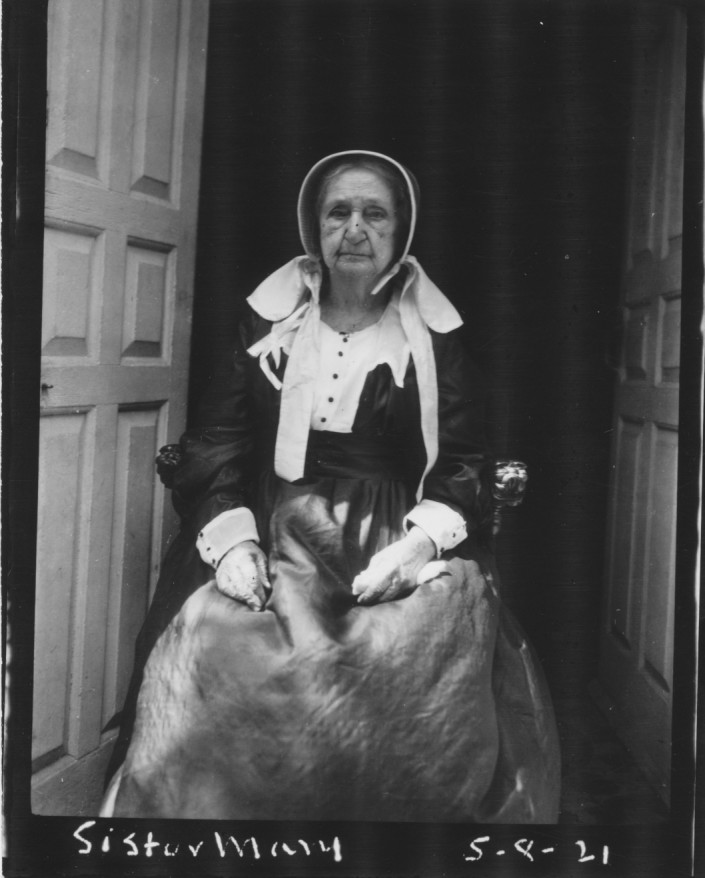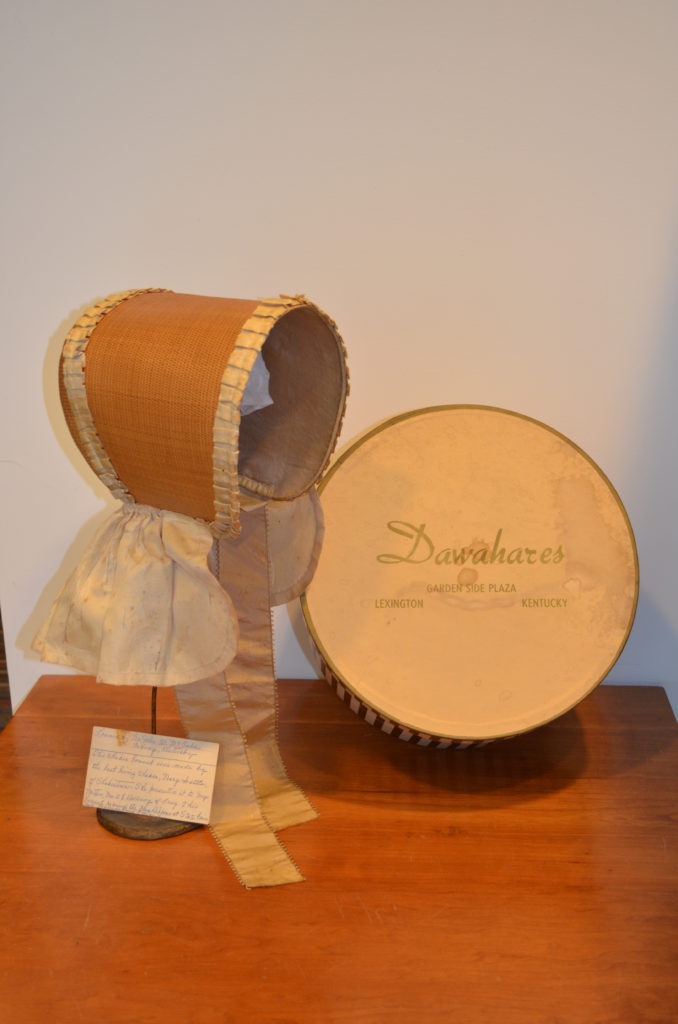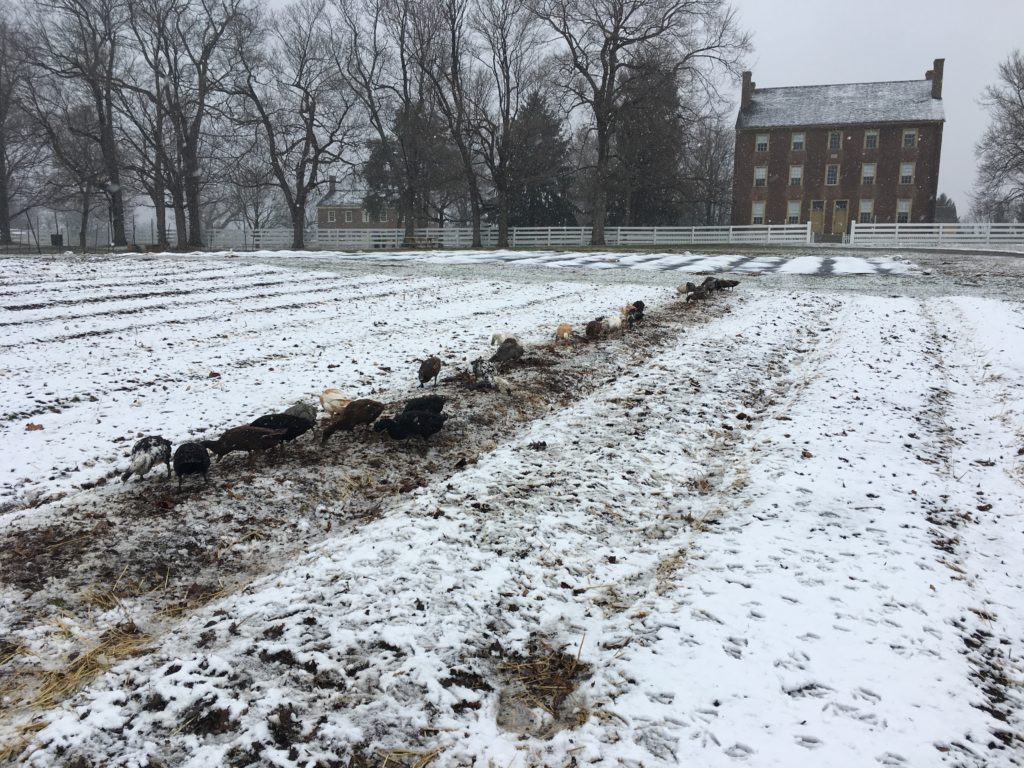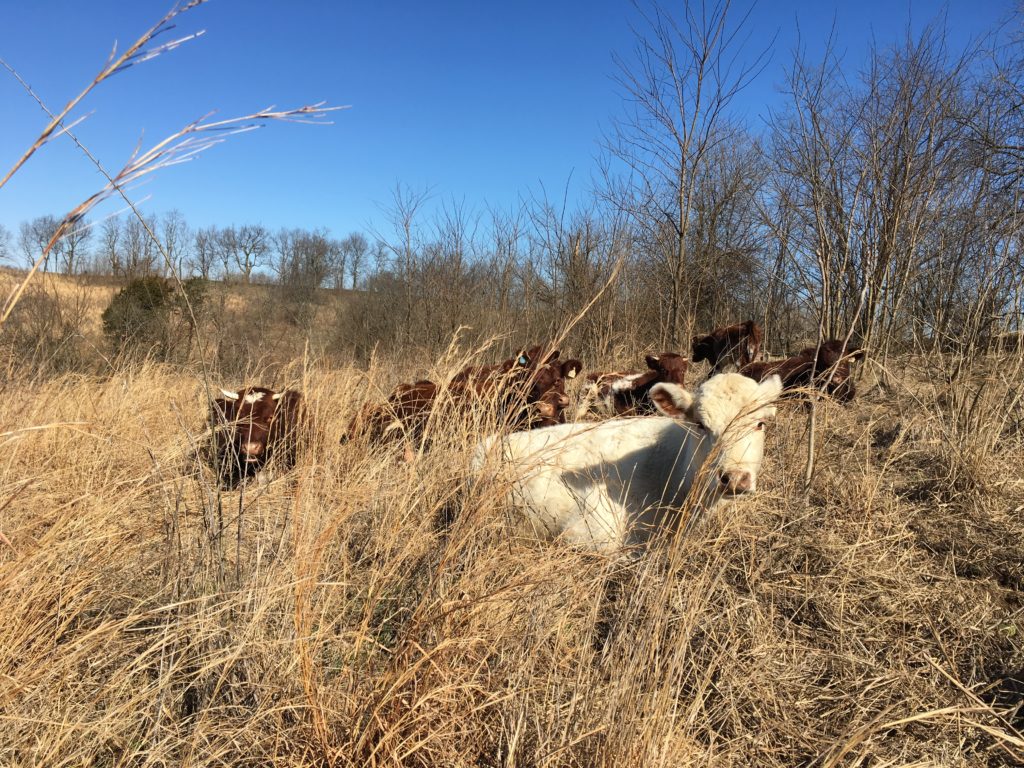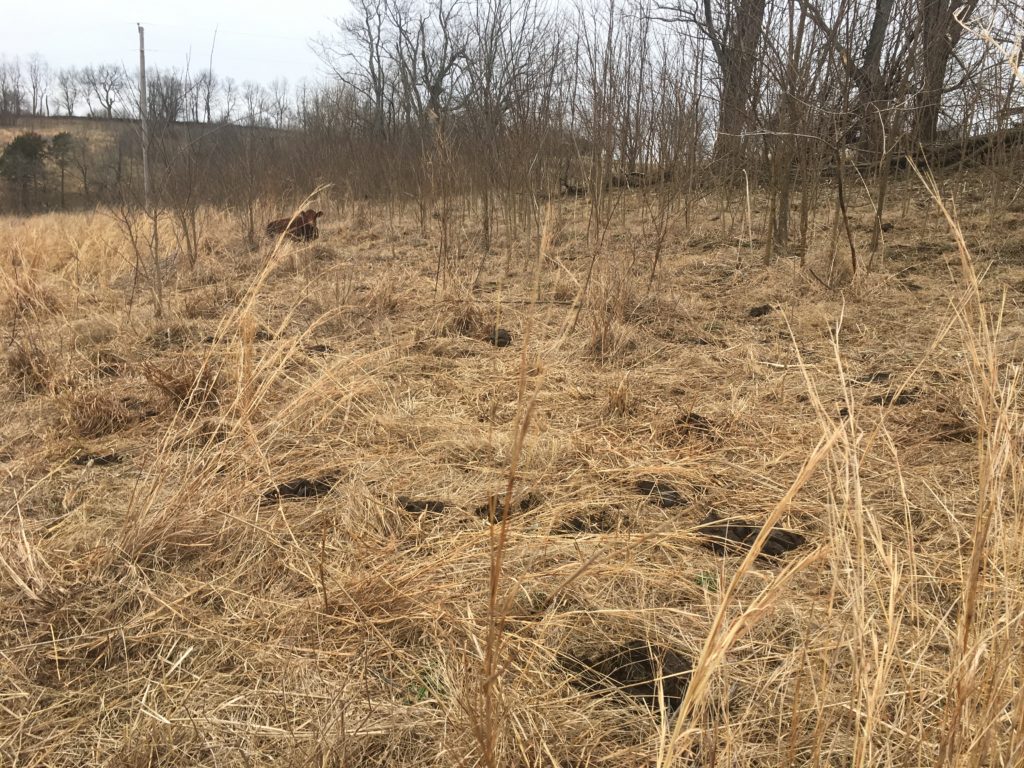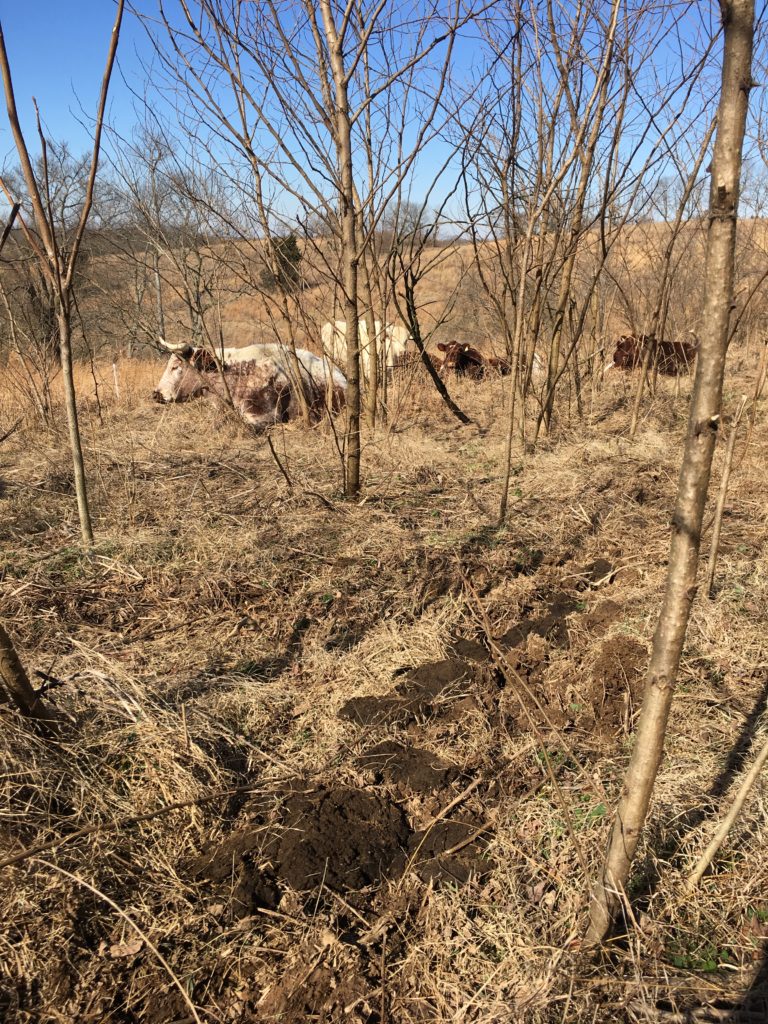Ben Leffew, Preserve Manager
Laura Baird, Assistant Preserve Manager
We’re happy to report that on February 26 and 27 Shaker Village completed our prescribed burns for the year! Over 450 acres of native prairie was burned with the help of 32 trained burn crew members.
Now, you may be asking yourself – What!? They set their fields on fire? On purpose? Why would they do that?
Glad you asked. Here’s the scoop.
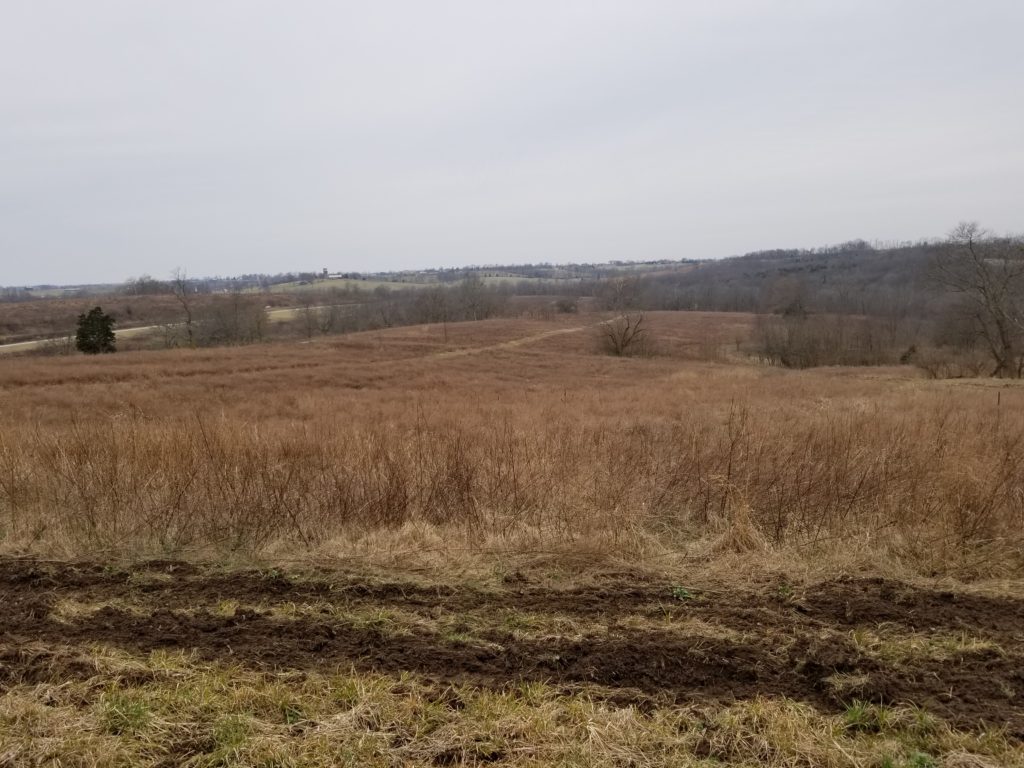
Before 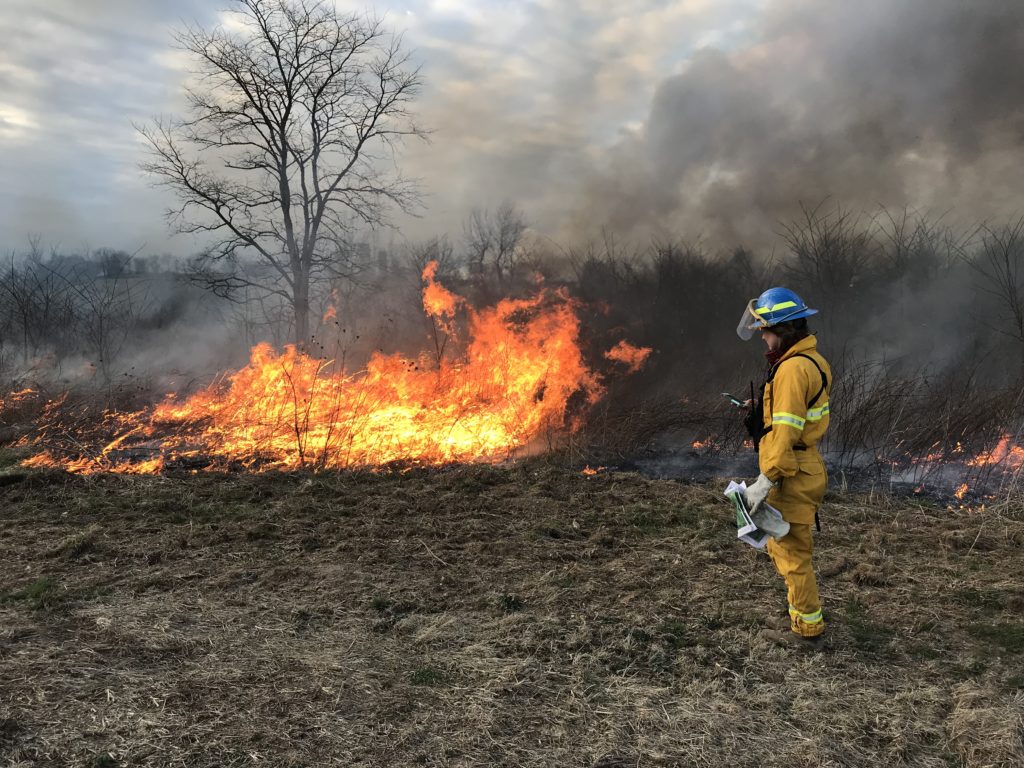
During
From 2009 to 2014 Shaker Village converted 1,000 acres of pastures and hay fields dominated by Kentucky bluegrass (Poa pratensis) and tall fescue (Festuca arundinacea) into wildlife habitat. We used a bottom-up approach to wildlife management…instead of focusing on managing a specific species, we managed the habitat to support as many species of plants and animals as possible.
This new habitat is thriving – supporting a greater diversity of wildlife that in turn, support a healthier ecosystem overall. It does take quite a bit of management, though!
The most effective management tool we have at our disposal is prescribed fire. According to our burn plan prescribed fire is used to, “control woody encroachment, create bare ground for ground dwelling wildlife, and create quality brood rearing habitat for songbirds.” Cody M. Rhoden, Small Game Biologist with Kentucky Department of Fish and Wildlife (close partners in this process) says, “We use prescribed fire because it does things to the system we know will benefit wildlife in a natural way, as opposed to mowing, masticating, chainsawing, etc. These tools will do a very similar job to the system, but with fire we are using something that has arguably always been a part of open herbaceous grasslands.”
Essentially, we burn off the old to make room for the new. Many plants have evolved with fire for millennia and respond with a flush of new growth after the fire. Wildlife takes advantage of this new growth in a variety of ways throughout both the nesting season and migration.
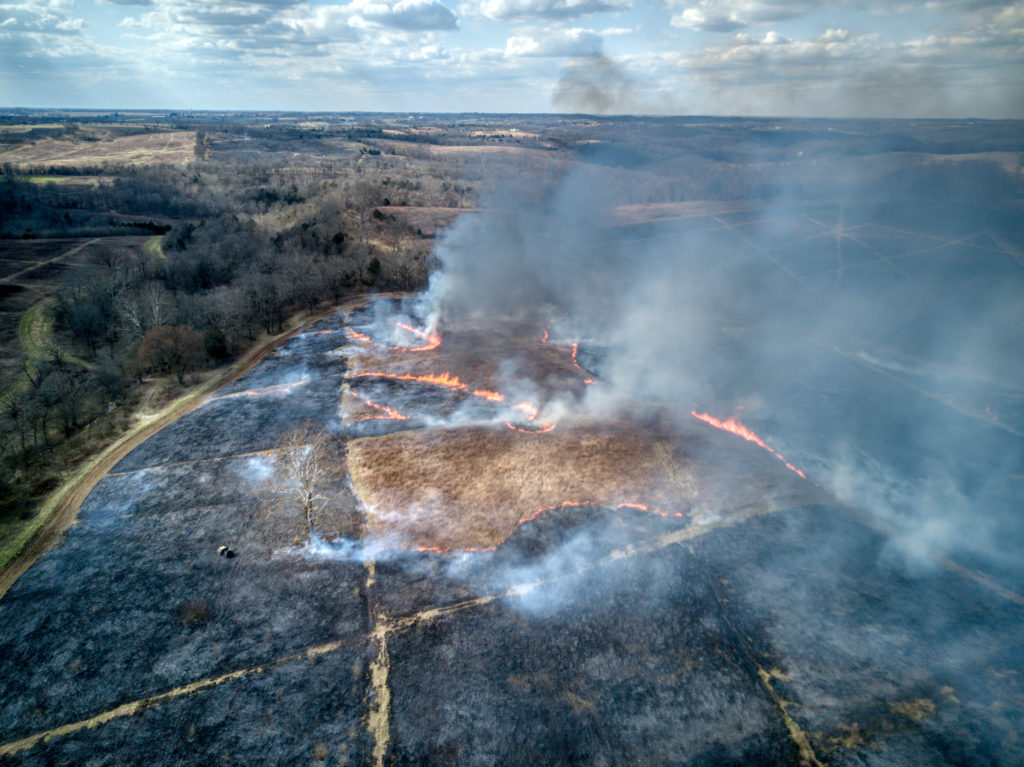
A view from above 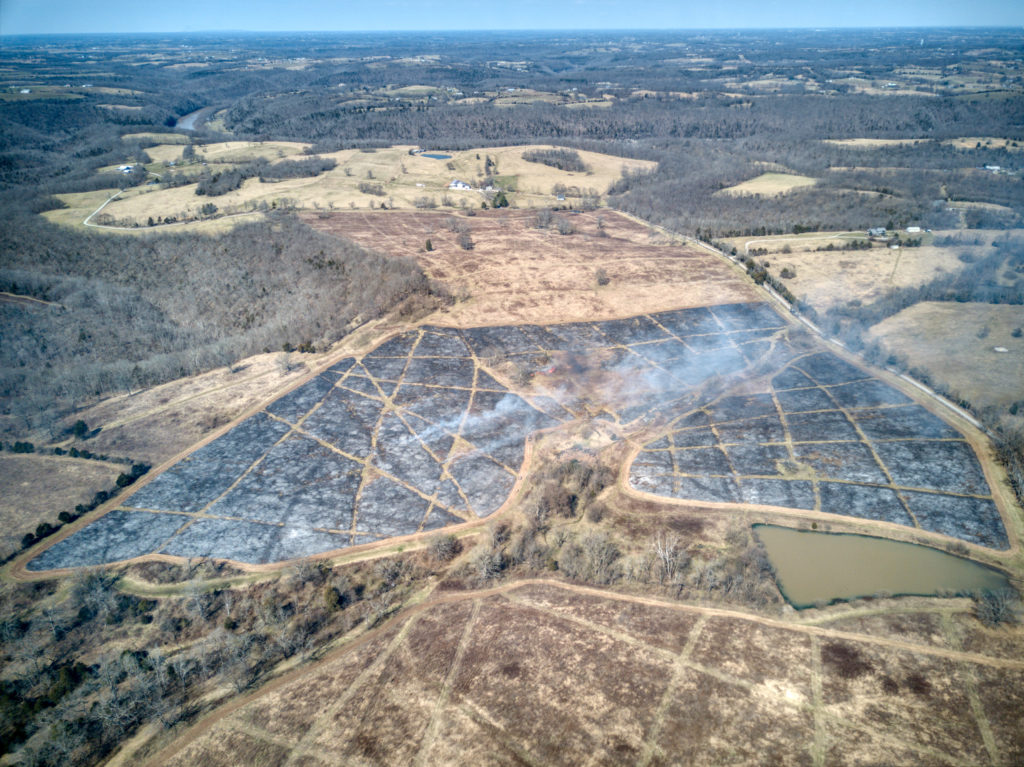
The aftermath
Aerial photos courtesy of Dan Stratton.
While the fields look black now, you can still see some unburnt patches. Areas with higher density of cool season grasses, game trails, and woody stems didn’t allow the fire to carry through as well as other areas with a higher density of combustible fuel. This is okay. Greater diversity in the types of vegetation left after the burn lead to a higher quality wildlife habitat.
Once July rolls around and the fields look overgrown as you hike through the Preserve, pay attention to how some fields look a little greener (burnt) vs. some fields that look a little more disheveled (unburnt) with dead material from previous growing season present.
If you would like to learn more about the Preserve at Shaker Village, please email us at [email protected]!
